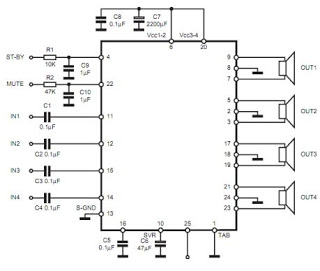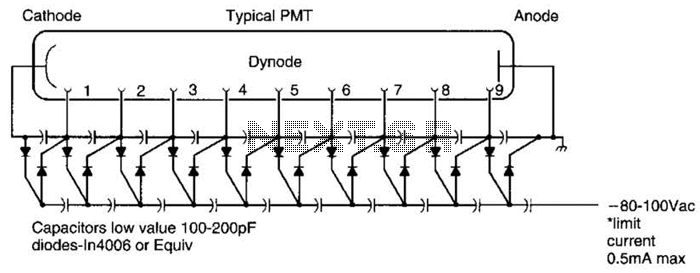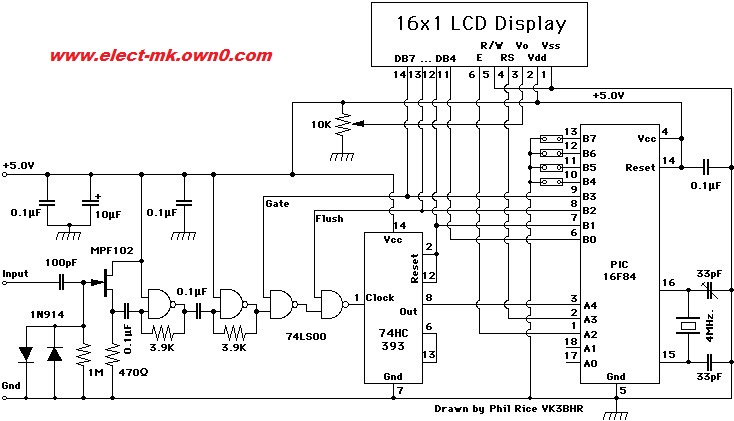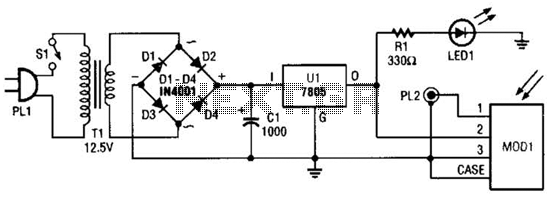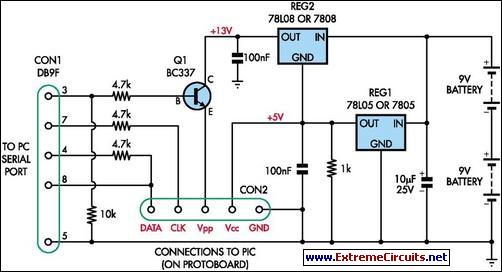
Keypad Controlled Switch No2 circuit
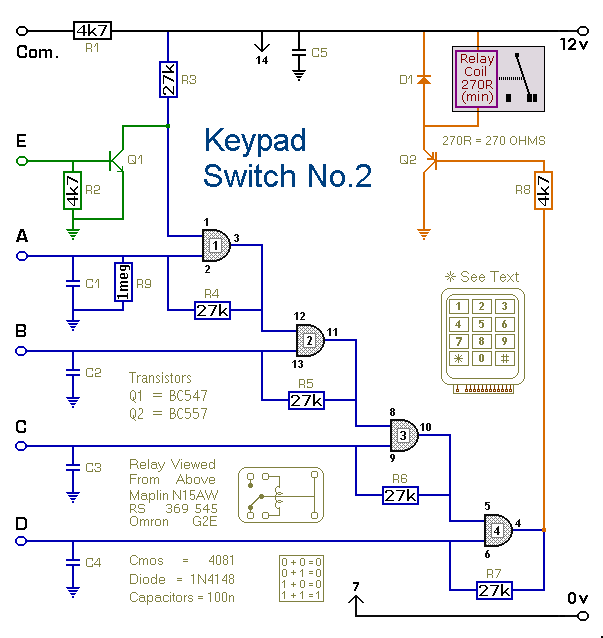
This is a simplified version of the 4-Digit Keypad Controlled Switch. The design has been modified to reduce the complexity of the circuit and the number of components required. Consequently, the code may be somewhat less secure; however, it should still be adequate for numerous applications.
The 4-Digit Keypad Controlled Switch is an electronic circuit designed to enable or disable a load based on a user-defined 4-digit code input through a keypad. The circuit typically consists of a 4x4 matrix keypad, a microcontroller, and a relay or transistor switch to control the load.
The matrix keypad is connected to the microcontroller's digital input pins. When a key is pressed, the microcontroller detects the specific row and column that intersect at the pressed key, allowing it to identify which digit has been entered. The microcontroller is programmed with the desired 4-digit code, which is stored in its memory.
The circuit operates in the following manner: upon powering up, the microcontroller remains in a standby mode, waiting for input from the keypad. When the user enters a sequence of four digits, the microcontroller compares the entered code against the stored code. If the entered code matches the stored code, the microcontroller activates the relay or transistor switch, which in turn allows current to flow to the connected load, effectively turning it on. If the entered code does not match, the circuit remains inactive, and the load stays off.
For security purposes, the design can incorporate features such as a timeout period after a certain number of incorrect attempts, during which the circuit would lock out further attempts for a predefined duration. While this simplified version may sacrifice some security features, it remains functional for applications where high security is not paramount.
Overall, this circuit is suitable for various applications, such as controlling lights, motors, or other electronic devices in home automation systems, providing a user-friendly interface for operation.This is a simplified version of the 4-Digit Keypad Controlled Switch. I have modified the design to reduce the complexity of the circuit - and the number of components required. As a result - the code is somewhat less secure. However, there should be lots of situations where it will still be adequate.. 🔗 External reference
The 4-Digit Keypad Controlled Switch is an electronic circuit designed to enable or disable a load based on a user-defined 4-digit code input through a keypad. The circuit typically consists of a 4x4 matrix keypad, a microcontroller, and a relay or transistor switch to control the load.
The matrix keypad is connected to the microcontroller's digital input pins. When a key is pressed, the microcontroller detects the specific row and column that intersect at the pressed key, allowing it to identify which digit has been entered. The microcontroller is programmed with the desired 4-digit code, which is stored in its memory.
The circuit operates in the following manner: upon powering up, the microcontroller remains in a standby mode, waiting for input from the keypad. When the user enters a sequence of four digits, the microcontroller compares the entered code against the stored code. If the entered code matches the stored code, the microcontroller activates the relay or transistor switch, which in turn allows current to flow to the connected load, effectively turning it on. If the entered code does not match, the circuit remains inactive, and the load stays off.
For security purposes, the design can incorporate features such as a timeout period after a certain number of incorrect attempts, during which the circuit would lock out further attempts for a predefined duration. While this simplified version may sacrifice some security features, it remains functional for applications where high security is not paramount.
Overall, this circuit is suitable for various applications, such as controlling lights, motors, or other electronic devices in home automation systems, providing a user-friendly interface for operation.This is a simplified version of the 4-Digit Keypad Controlled Switch. I have modified the design to reduce the complexity of the circuit - and the number of components required. As a result - the code is somewhat less secure. However, there should be lots of situations where it will still be adequate.. 🔗 External reference

